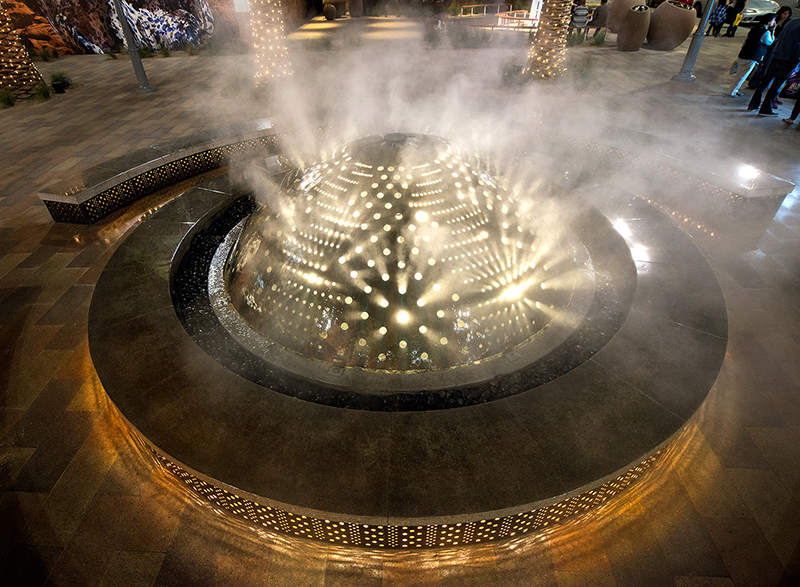Downtown Summerlin, NV
In our architect and design firm series, we aim to get a barometric read over the entirety of the aquatics industry by sitting down and talking with major architectural firms who are helping shape the industry by creating dynamic, innovative and landmark designs for aquatic environments around the world.
In the second installment of the series, we had the pleasure of speaking with Dennis Berkshire, President of Aquatic Design Group. For a bit of background, Aquatic Design Group has been designing in the aquatics industry since 1980, specializes in ”competition, recreation, leisure, therapy, ornamental and natural water features,” and has worked on projects across 35 states and 25 countries. [x] Berkshire became involved in aquatics during college and has worked in aquatic design since 1980. He joined Aquatic Design Group in 1999.
We started our conversation discussing Dennis and ADG’s approach to the design process. Berkshire took care to emphasize the importance that is placed on understanding business needs of the firm that will operate the aquatics facility, before any design work begins. They encourage feasibility studies on business models prior to design work, as an important first input. “The more we can learn about a public or private client’s business goals at a detailed level, the better the design process can meet those goals,” Berkshire shared.
He went on to say that, “there are no two pools that are exactly alike. Each and every facility needs to be tailor fitted to meet the needs and expectations of our client and their users.” In highlighting this, Berkshire described a past project where a high school district needed to maximize their single pool to accommodate water polo, diving, and recreational swimming. Merging their deep water needs with their shallow water needs within the footprint they were given, the school and ADG were leaning towards a predominantly deep pool.
At least until they talked with the PE teachers: “Two classes were scheduled to use the pool at a time in a district where passing swimming was mandatory to graduate. Knowing this, it did not make sense to design a predominantly deep water pool where 60+ beginner-level swimmers with only two supervising teachers would be taking classes.” ADG quickly changed the design of the pool to include a larger shallow end to accommodate the class sizes.
ADG discusses the entire program of the facility, and bases design decisions on functionality. Berkshire explained, “It is vitally important that we do a detailed and complete vetting process for the whole program of the facility… we need to understand how the client expects to use the pool because they may approach us with a preconceived idea that won’t entirely meet their end-goals.”
In addition, the firm brings its broader industry perspective to bear in its work. “Part of the process might also include testing and pushing – for example, we have the opportunity to see a broad spectrum of clients all across the country, and we poll our clients regularly to get summaries of where they are operating from. This gives us the perspective to see things our clients may not,” Berkshire commented.
Thank you to Aquatic Design Group and Dennis Berkshire for spending time speaking with us about your design expertise and perspective!
***Life Floor intends to highlight industry leaders through this blog series. In doing so, for the sake of accuracy, we may include quotes and opinions that are not shared by Life Floor itself. However, all quotes that appear are included because we believe they are valuable for consideration by both ourselves and for the aquatic industry as a whole.

